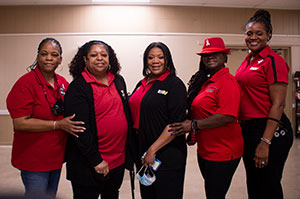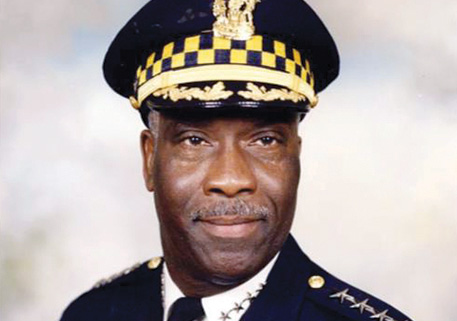
Women veterans continue in prominent DAV leadership roles in the years since first female national commander is elected
In summer 2017, a distinct sound reverberated throughout New Orleans that muffled the raucous nightlife on Bourbon Street and unique acoustics of the city’s famed zydeco music. It was the sound of a glass ceiling shattering and crashing to the floor, as Delphine Metcalf-Foster became the first woman elected DAV national commander.
Since then, the pile of broken glass has been swept away and replaced with a road paved for DAV’s women leaders to continue marching along.
National 1st Junior Vice Commander Nancy Espinosa is one such veteran, charging ahead following Metcalf-Foster’s example. While DAV membership spans generations within her family, Espinosa credits a conversation she had at a department convention as her inspiration to take on the mantle of leadership.
“[Metcalf-Foster] talked to me about [the organization] and the leadership at that level and how there was a need there for women veterans,” recalled Espinosa, who also serves as adjutant of the Department of Utah. “She was looking behind her and I needed to step up.”
Espinosa isn’t alone in considering Metcalf-Foster a DAV trailblazer, and their respective success in the organization’s leadership ranks didn’t happen overnight. Like others, their road to national leadership began locally.
Marine Corps veteran Shamala Capizzi was initially hesitant to take on a local leadership role but was swayed by the example set by other women veterans and the support of her chapter’s adjutant.
“There were already a lot of women on the line already as executives,” said Capizzi, who is now first junior vice commander of Chapter 10 in Virginia. “So that made me feel more comfortable in taking the role because there were other women veterans that paved the way for me.”
Navy veteran Katina Barnes’ situation differed. Her local chapter didn’t have any other women veterans attending meetings, leaving her with questions her male counterparts didn’t have answers to.
“I felt as though there was no voice [for women veterans], so I had to make one,” said Barnes, who sits on DAV’s national Women Veterans Interim Committee and is also the women’s committee chair for the Department of Maryland. “They allowed me to do whatever I felt was a need for female veterans to be represented.”
“Representation matters,” said Capizzi. “As the veteran population has changed and society has changed, DAV has changed too to meet the needs of our veterans.”
Many women veterans acknowledge that uphill battles still exist when it comes to gaining the confidence of their male counterparts. Barnes believes the best way to counter that is to get their peers to understand why women veterans look to DAV.
“It’s so important that male veterans understand that we are women, we are wives, we are sisters, we are mothers,” she said. “And we’ve earned everything we’re asking for just like they’ve earned it.”
“Women veteran leaders in DAV are a twofold benefit to the organization,” explained Metcalf-Foster. “It enhances the perspectives on how disabilities are viewed from a woman veteran’s viewpoint, and it allows for new viewpoints to be illuminated while simultaneously recognizing the historical strong points this organization already knows about.”
“We’re not trying to create a new organization,” said Valerie Taylor, a former commander of an Air Force aeromedical evacuation unit who is now the director of the women veterans program for the Department of Tennessee. “We’re trying to bridge the gap for medical services and homeless female veterans.”
But as each of the women interviewed noted separately, that gap cannot be bridged without other women stepping up to lead at all levels.
“There’s always someone to call,” said Espinosa. “If you need help, you’re not alone. We’re not throwing you into a position we’re not going to help you with or let you fail.”
“Let us help you, and help us help others,” added Taylor.
“Women veterans have proven themselves to be a special population of strength and resilience,” said Metcalf-Foster. “I was the first [female DAV national commander], but I do not want to be the last.”






